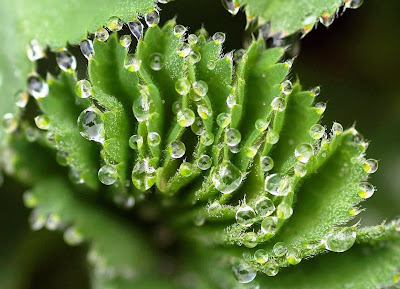Dodoens noemt het Laserkruid ook Seseli. Hij schrijft: Dat ierste geslacht heet in Griecx Seseli Massaleoticon. In Latijn Seseli Massiliense/ van sommighen Spagnon ende Platycyminon, id est Latum cuminum/ dat es breede Comijn. In die Apoteke als Jacobus de Manlys scrijft Siler montanum. In Hoochduytsch van sommighen Waldt kymmel.
Tweede gheslacht wordt gheheeten in Griecx ende Latijn Seseli AEthiopicum/ ende van den Egiptenaeres Cyonophrice.
Tsaet ende die wortelen van Seseli sijn werm ende drooge tot in den tweeden graedt/ ende subtijl van substantien.
- Tsaet van Seseli met wijn ghedroncken sterckt ende verwermt die maghe/ het doet die spijse verteeren/ het versuet dat crimpsel ende weedom in den buyck/ het gheneest die coude huyverachtighe cortsen/ ende es seer goet tot die corticheyt van den adem ende langduerende verouderden hooft. In somma tes seer goet tot alle inwendighe leden.
- Tselve saet doet oock die urine lossen ende es goet tseghen die droppelpisse ende coupisse/ het verweckt die natuerlijcke cranckheyt der vrouwen/ iaecht af die doode vruchten ende doet die moeder die opclimt sincken ende in haer plaetse keeren.
- Tsaet van Seseli es oock goet ghebruyckt den ghenen die met eenige vallende sieccte besmet sijn.
- Die reysende man die saet van Seseli met peper ende wijn drinckt en sal gheen coude over wech crijghen.
- Tsaet van Seseli es oock goet den gheyten ende andere viervoetighe ghedierten te drincken ghegheven/ om lichtelijck haer ionghen te worpen. Tselve werck doen oock die bladeren alsmense den vee teten gheeft.
En dus, volgens Dodonaeus, blijkbaar ook goed voor mij, de reizende man 'die saet van Seseli met peper ende wijn drinckt en sal gheen coude over wech crijghen'.
Wat wetenschappelijk onderzoek Laserpitium species
Antimicrobial properties of extracts of underground parts of three Laserpitium L. (Apiaceae) species, namely Laserpitium latifolium L., Laserpitium zernyi Hayek and Laserpitium ochridanum Micevski, were investigated. The investigated species are widely used as functional foods, as spices and for preparations in traditional medicine for treating complaints connected with infection and inflammation.
Furthermore, antimicrobial and antibiofilm effects of laserpitine, the most abundant compound in the chloroform extract of L. latifolium, and guaianolide sesquiterpene lactones, such as, isomontanolide, montanolide and tarolide, principal components of the extracts of L. zernyi and L. ochridanum were assessed. The antimicrobial activity was tested using the microdilution method against five pathogenic bacteria and five fungi, as well as in the microplate biofilm assay on two Candida clinical isolates (C. albicans and C. krusei).
Among the extracts, L. latifolium showed the most prominent activity. Isolated metabolites exerted higher effects against fungal than against bacterial strains, isomontanolide being the most active. Interestingly, all constituents showed higher potential on inhibition of biofilm formation than fluconazole, a reference compound. Tested metabolites may be good novel agents with high antifungal and antibacterial potential that might find practical applications in food industry as food preservatives in order to retard the growth of food spoiling microbes, but only after detailed safety assessments.































